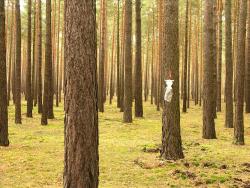 Wydawca treści
Wydawca treści
FOREST PROTECTION
 Wieża przeciwpożarowa. Fot. Paweł Mrowiński
Wieża przeciwpożarowa. Fot. Paweł Mrowiński
 Schron dla nietoperzy. Fot. Paweł Mrowiński
Schron dla nietoperzy. Fot. Paweł Mrowiński
 Zbiornik przeciwpożarowy. Fot. Paweł Mrowiński
Zbiornik przeciwpożarowy. Fot. Paweł Mrowiński
 Drzewostan zachowawczy - ponad 200-letni bór sosnowy. Fot. Paweł Mrowiński.
Drzewostan zachowawczy - ponad 200-letni bór sosnowy. Fot. Paweł Mrowiński.
 Pułapka feromonowa na brudnicę mniszkę. Paweł Mrowiński
Pułapka feromonowa na brudnicę mniszkę. Paweł Mrowiński
 Oprysk chemiczny przeciwko szkodliwym owadom. Fot. Paweł Mrowiński
Oprysk chemiczny przeciwko szkodliwym owadom. Fot. Paweł Mrowiński
 Wieża przeciwpożarowa (obserwacyjna). Fot. Paweł Mrowiński
Wieża przeciwpożarowa (obserwacyjna). Fot. Paweł Mrowiński
 Wiatrołom. Fot. Paweł Mrowiński
Wiatrołom. Fot. Paweł Mrowiński
 Pułapka na szkodliwe owady. Fot. Paweł Mrowiński
Pułapka na szkodliwe owady. Fot. Paweł Mrowiński
 Akcja przeciwpożarowa. Fot. Paweł Mrowiński
Akcja przeciwpożarowa. Fot. Paweł Mrowiński
Forest protection is connected with the overall of activities being aimed at sustaining forest's sustainability, as for increasing its natural persistence against biotic factors, abiotic factors, as by performing preventive actions acting against unfavourable and harmful factors.
Factors threatening forest existence sustainability:
- abiotic environment – these are processes that occur in inanimate nature, f.ex. frosts, draughts, heavy rain falls, strong winds.
- biotic environment – there are a few factors of animate nature, that cause danger for forests, f.ex. insects, pathogenic fungi.
- anthropogenic factors – directly connected with human activity, f. ex. industrial emissions, water pollution, lowering the level of the underground waters.
Current health and sanitary forest conditions of the Forest District Lubsko are assessed as the good ones. Damages arising from the biotic, abiotic and anthropogenic factors in the previousperiod of time haven't posed any risk the forest stands stability.
Forest protection against pest insects
A group of folivore insects living in our forests includes the following: pine-tree lappet, black arches, pine beauty.
All upper mentioned insects occurred in so called outbreaks foci in the years 1999-2008. The area of the outbreaks foci in the Forest District Lubsko equals 2 601,52 hectares.
Very important allies of the foresters in the fight against excessive breeding of pest insects are birds.

Protection against damages done by the hunting game
Forest areas of the Forest District Lubsko constitute the place of living of large populations of hunting game, especially stags, deer and wild boars.
The game has got a significant influence on forestry, however within the area of the forest district the level of damages remains at the economically tolerable level. In recent years, there has been a noticeable decrease of the cover of damaged forest stands. It is mostly influenced by using different preservation methods, such as: enclosing the forest cultivations and uderplantings with netting, and maintaining the number of hunting animals at the satisfactory level.

The greatest risk from among pathogenic fungi exists from honey fungus (Armillaria spp.) andannosum root rot fungus (Heterobasidion annosum) in pine forest stands on the former arable lands. In the Forest District Lubsko on the former arable lands, there are 3591,33 hectares of forests.
In forests' cultivations the major threat is from honey fungus (Armillaria spp.)and needle cast of pine (Lophodermium pinastri). Besides, in all forest stands, which are over the cutting age (old growth forest), there occur pine fungus.
Trees protection against diseases caused by pathogenic fungi , which aim is to decrease damages and is based on applying appropriate preventive measures, among others, including: proper maintenance of routine actions, treatments and improvement fellings in the younger forest stands in due time, planting deciduous (leafy) trees in the gaps having arisen after trees attacked by fungus, avoiding the renewal of the forest area where honey fungus do harms, with coniferous trees species. The stubs after cut trees are protected with biopreparat (biological substance preaparation).





